




Quick Facts
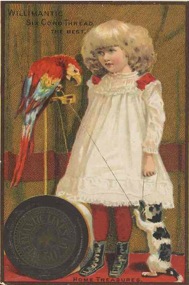
Home Treasures
Willimantic Silk Cord Thread
The Best
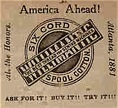
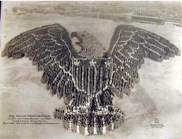 The Human American Eagle
The Human American Eagle12,500 Officers, Nurses and Men, Camp Gordon, Atlanta Ga. Maj. Gen. George H. Cameron, Commander 1918
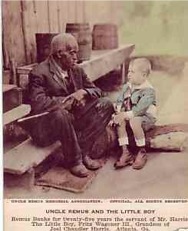
UNCLE REMUS AND THE LITTLE BOY
Remus Banks for twenty five years the servant of Mr. Harris. The little boy, Fritz Wagoner III, grandson of Joel Chandler Harris. Atlanta Ga.
This is an Official Post Card of the Uncle Remus Assoc. that organized in 1908.
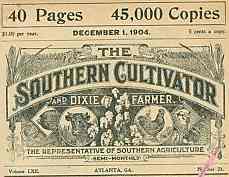
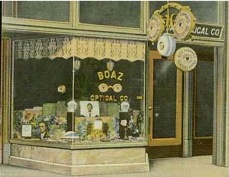
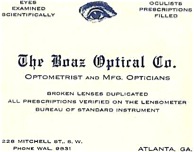
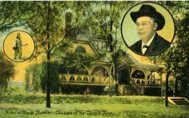
Joel Chandler Harris
Wrens Nest
Home of Uncle Remus



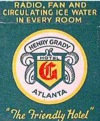



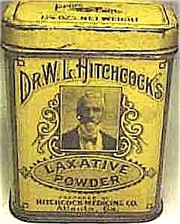


Murrel’s Row was a disreputable section of early Atlanta, on the north side of Decatur St., between Peachtree and Pryor St. It was named for the notorious Tennessee murderer, John A. Murrel, who was active in Hall Co. and the surrounding area from about 1830 to 1853-56 or later. He posed as a preacher, but was said to have been the bloodiest villain of all time.
Snake Nation was a tenderloin district, so named as it consisted of criminal and immoral elements. It was sprawled along the old Whitehall Rd., later Peters St. The section was cleaned out in the early 1850s.
Wren’s Nest is located at 1050 Ralph D. Abernathy, this former home of Joel Chandler Harris (1848-1908) is a memorial to the creator of the Uncle Remus stories. It was given this name when a wren built her nest in the mail box, and Harris built another mail box so as not to disturb her.
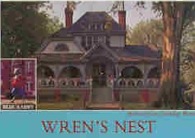
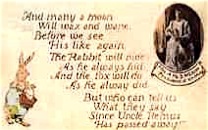
And many a moon will wax and wane, before we see his like again. The Rabbit will hide as he always did, and the Fox will do as he always did. But who can tell us what they say since Uncle Remus has passed away.
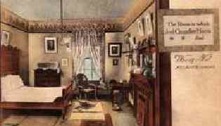 The room where Joel Chandler Harris died
The room where Joel Chandler Harris died Atlanta is the only city in North America destroyed by a fire as an act of war. Following the city's surrender to General Sherman in 1864, only 400 structures remained standing. Today, the city's symbol is the Phoenix, a legendary bird of Egyptian mythology that rose from its own ashes with renewed strength and beauty.
Ever wonder why no matter where you go in Atlanta, you always seem to be driving on Peachtree? There are more than 55 streets with the word Peachtree.
The southern terminus of the Western & Atlantic Railroad was incorporated as the town of Marthasville in 1843 under a commission form of government.
The town charter was amended so as to change the name of Marthasville to Atlanta on Dec. 26, 1845.
The population was 2,000.
The Atlanta Gas Light Co.
was established and the city
was first lighted by gas on
Dec. 25, 1855
Slabtown was named when Jonathan Norcross put up a saw mill on the site of Decatur St. opposite Pratt St. Mr. Norcross gave slabs of wood to poor people for use in building cabins in the locality.
After the Civil War, the route along Peachtree St. from Atlanta to Buckhead became known as “Tight Squeeze.” It was narrow, crooked and heavily wooded, making traveling by wagon difficult. This stretch of Peachtree St. between 8th and 12th Streets, looped around a 30 ft. ravine that ran east of the present day Crescent Ave. down toward Piedmont Ave. It was notorious as a haven for cut-throats and thieves, thus it became know as “a tight squeeze getting through there with ones life.” In 1887, in preparation for the Piedmont Exposition, it was eliminated by filling the ravine and straightening the course of the street. By the turn of the century, wealthy people built homes, which later gave way to office and retail business. During the 1960s and early 1970s, the area housed the South’s largest “hippie” district known as
The Strip.
For more info see
“The Strip Project”

James Jackson 1819 - 1887
James Jackson, (grandson of James Jackson [1757-1806] and nephew of Jabez Y. Jackson), a Representative from Georgia; born in Jefferson County, Ga., on October 18, 1819; pursued classical studies and was graduated from the University of Georgia at Athens in 1837; studied law; was admitted to the bar in 1839 and commenced practice in Athens, Ga.; secretary of the State senate in 1842; served in the State house of representatives 1845-1849; judge of the superior court 1846-1859; resigned in June 1859; elected as a Democrat to the Thirty-fifth and Thirty-sixth Congresses and served from March 4, 1857, until January 23, 1861, when he retired from the House; judge advocate on the staff of Gen. Thomas J. (Stonewall) Jackson 1861-1865; moved to Macon, Ga., and practiced law from 1865 until 1875, when he moved to Atlanta; appointed an associate justice of the State supreme court in 1875; elected to the position by the legislature in 1880 to fill an unexpired term; reelected in 1887; chief justice of Georgia from 1879 until his death in Atlanta, Ga., January 13, 1887; interment in Rose Hill Cemetery, Macon, Ga.

